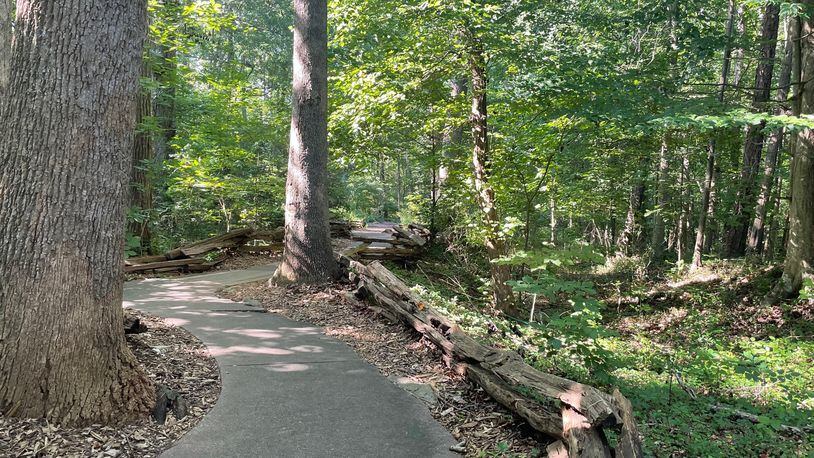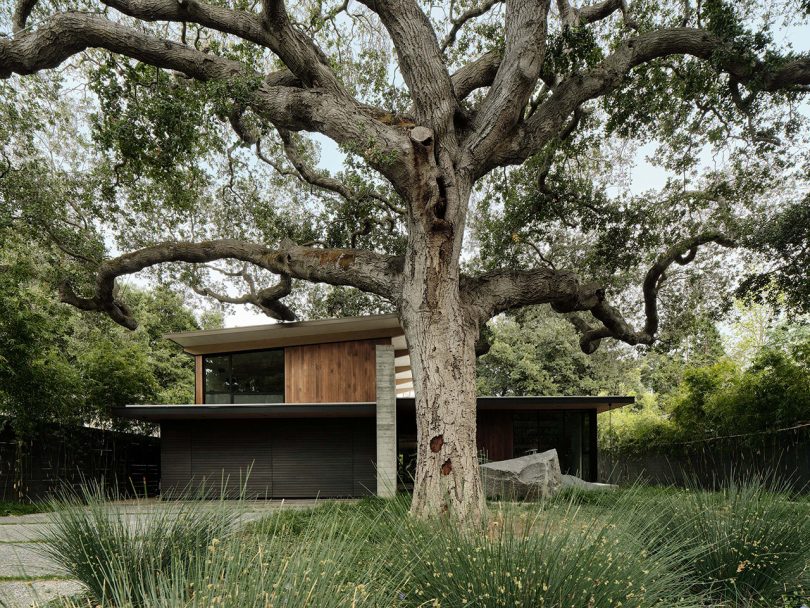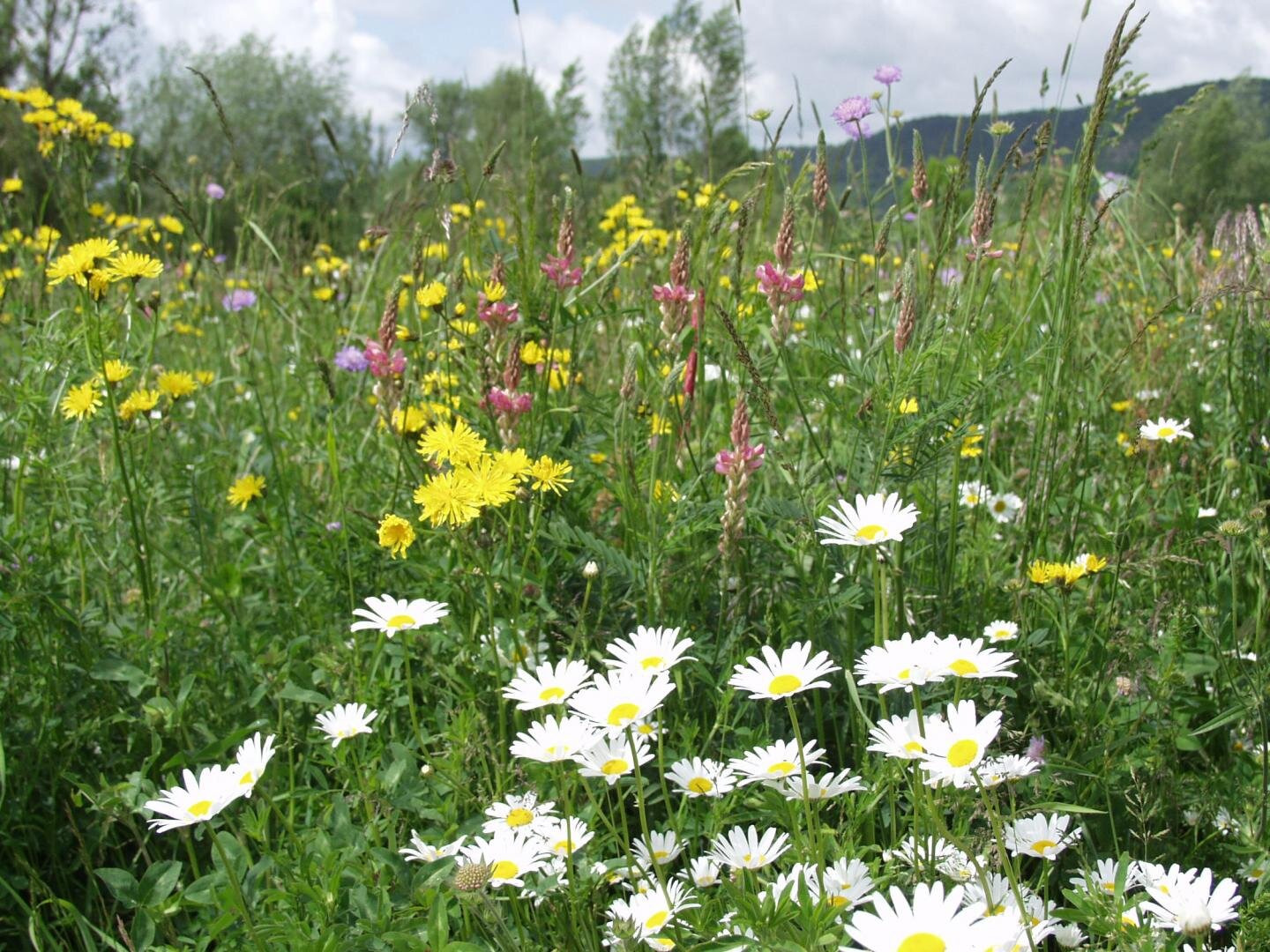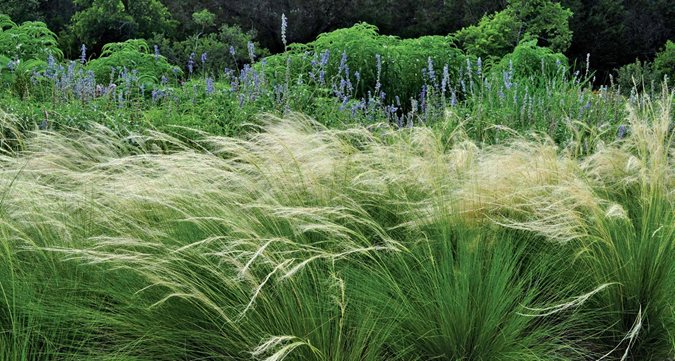An Intricate Balance of Life
Trees and grass, the eminent structures and carpeting of nature’s landscapes, respectively, create a harmonious balance in the urban environment . These verdant entities are the underpinnings of ecosystems, each offering unique values, attributes, and impacts on our surroundings.

Distinctive Lifeforms
The diversity and disparity between trees and grass are pronounced, each playing a distinctive role in ecological balance. Trees, with their perennial nature and woody constitution, create the majestic canopies that serve as the lungs and shelter of the forests, providing habitats and sustaining biodiversity. Grasses, belonging to the family Gramineae, are herbaceous and primarily inhabit the understory of forests or sprawl across open fields, acting as the ecological carpet that prevents soil erosion and promotes water filtration.
Beyond their dissimilar appearances and ecological roles, the choice between native grasses and desired lawn varieties is crucial in environmental conservation. Native grasses are well-adapted to local climates and soil types, requiring less water, fertilizer, and maintenance compared to their non-native counterparts, often selected purely for their aesthetic appeal. These local varieties play a pivotal role in supporting native wildlife, providing food and shelter, and maintaining the natural ecological balance.
:max_bytes(150000):strip_icc():format(webp)/8860298334_509c5f9698_o-2fba9e1a26cc465bb9d4f9b659b2296d.jpg)
Desired lawn varieties, on the other hand, can be ecologically disruptive, often requiring substantial water, fertilizers, and pesticides for maintenance. This not only puts a strain on local water resources but also leads to runoff pollution, affecting nearby water bodies and aquatic life. The monoculture of such lawns also reduces biodiversity, offering little to no support for local fauna, particularly pollinators, which are essential for maintaining healthy ecosystems.
Opting for native grasses over traditional lawn varieties is therefore not only an environmentally conscious choice but also a step towards ecological restoration and sustainability. By embracing the inherent beauty and resilience of native grasses, we allow our landscapes to thrive naturally, reinforcing the symbiotic relationship between diverse plant species and the fauna they support, all while reducing our ecological footprint and conserving precious resources. In this intricate dance of life, trees and grass, albeit different, converge to paint a cohesive picture of ecological harmony, resilience, and interconnectedness.
The Chemistry Beneath
To burgeon and flourish, both trees and grass necessitate distinct soil compositions and ecological partnerships, each tailored to their intrinsic biological requirements and ecological roles. Grass, with its lean towards versatility and rapid growth, thrives in soils rich with bacterial communities. These bacterial-dominated environments are conducive to swifter nutrient cycling and elevated nitrogen availability, essential elements that fuel the quick and prolific growth characteristic of grasses. This bacterial presence facilitates the decomposition of organic matter, releasing nutrients more rapidly and allowing grasses to adapt and propagate in a diverse range of habitats.

Trees are the stoic giants of our ecosystems, they foster a profound reliance on fungal associations to access and mobilize vital nutrients. In the dense, complex tapestries of forest ecosystems, the symbiotic relationships between trees and fungi are not mere conveniences but absolute necessities. Fungal networks, often referred to as the ‘Wood Wide Web’, act as intricate conduits for nutrient transfer between trees, allowing them to communicate and share resources, enhancing the resilience and diversity of the forest community. These fungal partners assist trees in accessing nutrients from the soil, extending the reach of their roots and unlocking resources otherwise unavailable.
The contrast in soil biology preferences between trees and grass underpins the delicate ecological equilibrium within their respective habitats. This divergence in biological alliances highlights the intricate and diverse strategies adopted by different plant species to adapt, survive, and thrive in varying environments. While trees create stable, long-lasting ecosystems, fostering biodiversity and ecological complexity through their fungal alliances, grasses colonize and stabilize the land rapidly, preventing erosion and creating a base layer for ecological succession through their bacterial partnerships.
In this delicate and dynamic interplay of life, the contrasting yet complementary relationships that trees and grass form with their microscopic allies not only shape their growth and survival but also weave the intricate and resilient fabric of our ecosystems, maintaining the balance and harmony of the natural world.
Oxygen Production: A Common Misconception
In the intricate ballet of ecological processes, the towering presence of trees often lends itself to the assumption of unparalleled oxygen production, their immense structures seemingly synonymous with abundant life-giving gas. However, it is the expansive cloak of grasses, with their unassuming stature and swift growth, that may truly be the unsung heroes of oxygen provision. With their extensive coverage and rapid developmental cycles, grasses hold the potential to surpass the oxygen output of their towering arboreal counterparts, breathing vitality into our atmosphere with every cycle of growth and decay.

Grasses, with their ephemeral lifecycles and expansive growth, possess an inherent ability to photosynthesize rapidly, converting sunlight into energy with remarkable efficiency and releasing oxygen back into the atmosphere with a frequency and abundance that is foundational to life on Earth. This prolific production of oxygen is an unceasing dance of transformation, sustaining countless lifeforms and maintaining the delicate atmospheric balance essential for life as we know it.
The sheer ubiquity of grasses across diverse landscapes contributes significantly to global oxygen levels. From the sprawling savannas to the rolling prairies, the vast expanses of grasses are ceaseless contributors to our atmospheric harmony, their subtle whispers of growth echoing the symphony of life that sustains our planet.
Grasses’ adaptability and resilience allow them to inhabit environments from lush meadows to arid deserts, expanding their ecological influence and oxygen-producing capacity across varied ecosystems. Their rapid lifecycle not only enables the immediate release of oxygen but also the quick recycling of nutrients, enhancing soil fertility and promoting ecological diversity and stability.
In this silent symphony of life, where trees stand as the magnificent conductors orchestrating the ecological melodies, it is the grasses, the subtle, tireless musicians, that play the harmonious tunes of oxygen, weaving the breath of life into the tapestry of our world. It is a harmonious interplay, a delicate balance where the colossal and the unassuming come together, crafting the enduring, life-sustaining sonata of our living, breathing planet.
Carbon Sequestration: Grass Vs Trees
Despite prevailing notions, the dynamic expanses of grasses hold the potential to eclipse trees in the absorption of CO2 per unit of area, a capability attributed to their extensive surface area and accelerated growth rates. Grasses, with their lush canvases and swift life cycles, become arenas of rapid carbon fixation, absorbing and utilizing atmospheric CO2 efficiently and contributing to the immediate reduction of this greenhouse gas. Their prolificacy and adaptability enable them to blanket the earth, from gentle knolls to rugged terrains, acting as versatile carbon sinks and mitigating atmospheric carbon dioxide levels effectively.
Trees are the timeless sentinels of our landscapes, imbue the ecosystem with the gift of prolonged carbon storage, embodying the essence of long-term carbon sequestration. While grasses are transient storehouses of carbon, trees are the enduring vaults, locking away carbon within their sturdy trunks, branches, and roots, for centuries or even millennia. This enduring storage of carbon is a fundamental pillar in the fight against climate change, mitigating long-term atmospheric carbon levels and providing a stable and lasting solution to the escalating concentrations of greenhouse gases.
In this ecological equilibrium, grasses and trees represent the symphony of immediate response and enduring stability. Grasses, with their relentless vigor and expansive presence, act as the swift guardians of atmospheric balance, absorbing CO2 efficiently and providing immediate relief to our atmosphere. Trees, with their steadfast presence and enduring structures, are the lasting guardians, ensuring that the carbon sequestered is kept away from the atmosphere, contributing to the long-term stability and balance of our planet’s climate.
The interplay between the transient and the perennial, the swift and the enduring, crafts a multifaceted approach to carbon sequestration, each playing a pivotal role in maintaining atmospheric harmony and mitigating the impacts of climate change. It is this delicate dance between the ephemeral grasses and the eternal trees that weaves the intricate tapestry of our resilient and balanced ecosystems, each thread a whisper of hope in the face of our changing climate.
The Ecological Efficiency of Grass
Grasses, with their versatile nature and relentless growth, can arguably be deemed as more ecologically efficient entities within the spectrum of flora. Their unparalleled adaptability and speed of growth enable them to colonize vast stretches of open spaces with remarkable swiftness, acting as the ecological vanguard against soil erosion. They are the silent architects of resilience, fortifying soils and rendering landscapes capable of harboring life, their expansive roots knitting the earth together and shielding it from the relentless kiss of the elements.

The ecological tapestry would be incomplete and imbalanced without the profound presence of trees, the stalwart keepers of biodiversity and climatic equilibrium. Trees are the foundation upon which rich, diverse ecosystems are built, their sprawling branches providing sanctuary and sustenance to countless species. They are the nurturing cradles of life, their leafy canopies whispering ancient secrets to the inhabitants of the forest, providing shelter, food, and a complex, interconnected environment where life flourishes in its myriad forms.
Beyond their role as biodiversity hubs, trees are the silent regulators of our planet’s climate. Their massive structures serve as reservoirs of carbon, mitigating the impacts of climate change by sequestering carbon dioxide from the atmosphere. They modulate the climate, their transpiration processes regulating atmospheric moisture and contributing to rainfall patterns, which in turn nourish the land and sustain life.
The ecological efficacy of grasses, with their adaptability and rapid colonization capabilities, is a vital component in maintaining ecological balance, serving as the initial protective layer of landscapes and preventing the detrimental impacts of soil erosion. However, trees, with their invaluable contributions to biodiversity, habitat provision, and climate regulation, stand as irreplaceable pillars in the intricate ecological architecture, each leaf, branch, and root a testament to their indispensable role in sustaining life and maintaining ecological harmony.
In this ecological symphony, the roles of grasses and trees are not of competition but of complementation. Each strand of grass and every towering tree contribute to the harmonious melody of life and ecological balance, crafting a world where adaptability and stability, transient growth and enduring presence coexist and interweave, forming the resilient and diverse tapestry of our living, breathing planet.
A Green Sanctuary: Trees in Residential Areas
Preserving trees in residential landscapes transcends mere visual appeal; it’s a decision steeped in extensive benefits, grounded in empirical science and tangible facts. Trees, the venerable sentinels of our environment, serve as nature’s air purifiers, adept at sieving out pollutants and replenishing the air with oxygen. Studies corroborate that a single mature tree can absorb approximately 48 pounds of CO2 per year, thus playing a critical role in mitigating climate change and purifying the air.

Moreover, the presence of trees is a catalyst for enhanced mental well-being. Numerous studies attest to the psychological benefits of being in proximity to trees, including alleviation of stress, anxiety, and depression. Exposure to green spaces has been linked to increased levels of happiness and reduced levels of cortisol, the body’s primary stress hormone. The psychological impact of trees is such that even the view of trees from a window can significantly improve mood and reduce recovery time in hospital patients.
Financial advantages also align with arboreal presence, as trees are known to elevate property values. Research indicates that homes with well-maintained trees can see an increase in value of up to 20%, serving as a lucrative investment for homeowners. This economic benefit is coupled with the potential for energy savings, as the shade provided by trees can reduce cooling needs in the summer, lowering energy consumption and utility costs. Strategically placed trees can reduce a household’s energy consumption by up to 25%.
Living adjacent to trees is synonymous with a spectrum of health dividends. It is substantiated by research that proximity to trees correlates with diminished stress and a decreased risk of chronic diseases, attributed to the enhanced air quality and opportunities for physical activity that trees facilitate. The air-cleansifying properties of trees remove pollutants such as sulfur dioxide, ammonia and nitrogen oxides, providing cleaner air to breathe, and their presence encourages outdoor activities, promoting physical health and well-being.

Trees are the guardians of biodiversity, hosting myriad species of birds, insects, and other fauna, thus contributing to ecological balance and sustainability. They are the anchors of ecosystems, providing habitat, food, and shelter to wildlife, and sustaining life in myriad forms.
The retention of trees within residential areas is a multidimensional boon, offering a plethora of benefits spanning environmental, psychological, economic, and health domains. Their enduring presence is a timeless investment in our well-being and the health of our planet, a symbiotic relationship where we reap the rewards of cleaner air, balanced minds, enhanced biodiversity, and a healthier, more harmonious existence.
The Water Dynamics
Within the endless ebb and flow of nature’s cycles, trees, with their towering majesty and intricate root networks, are typically more voluminous consumers of water compared to the modest requirements of grass. This elevated consumption is attributable to their substantial biomass and extensive root systems that delve deep into the earth, seeking sustenance from the hidden reservoirs beneath. A single large tree can absorb up to 100 gallons of water out of the ground in a day, reflecting the magnitude of their water interactions.
Trees are not mere consumers in the hydrological ballet; they are pivotal conductors orchestrating the rhythm of the water cycle. Through the process of transpiration, trees release water vapor back into the atmosphere, a silent symphony of droplets ascending to the skies, weaving clouds, and summoning the rains. This intricate dance of molecules is a crucial component in the formation of rainfall patterns, with forests acting as colossal humidifiers, modulating weather systems and nourishing terrestrial landscapes.
Trees, in their steadfast presence, also serve as the guardians of watersheds, their extensive root systems stabilizing soil structures, preventing erosion, and ensuring the health and vitality of aquatic ecosystems. They act as the ecological sponges, absorbing rainfall, reducing runoff, and allowing water to percolate into the ground, replenishing underground aquifers and sustaining river flows. This meticulous modulation of water resources is integral to the sustainability of ecosystems, supporting a myriad of life forms and maintaining the delicate balance of nature’s waterways.

Beyond their hydrological roles, trees are the architects of ecological resilience, their water-regulating functions sustaining biodiversity, mitigating climate extremes, and fostering the resilience of ecosystems against environmental stressors. They mediate the fluxes of water between the land and the atmosphere, contributing to the equilibrium of terrestrial and atmospheric moisture levels and ensuring the availability of water for all life forms.
While trees do imbibe more water in comparison to their grassy counterparts due to their extensive physiological structures, their role in the environmental tapestry is one of harmonious balance and sustenance. They are the silent shepherds of the water cycle, their whispers of transpiration crafting the rains, their roots cradling the waters, ensuring the fluid dance of life continues, and the symphony of nature plays on in harmonious resonance.
The Sanctity of Trees
The act of felling trees reverberates through the tapestry of nature, disrupting the delicate symphony of ecosystems and amplifying the already escalating crisis of climate change. When trees fall, it’s not just the timber that crashes; it’s a cascade of ecological consequences, a silent scream through the intertwined webs of life.
Trees are the anchoring roots of biodiversity, their sprawling branches cradling myriad forms of life. Each leaf, twig, and bark is a microcosm of existence, hosting a myriad of organisms, from the microscopic to the majestic. When these arboreal guardians are removed, it triggers a domino effect of loss and imbalance, unraveling the intricate threads of ecological relationships and leading to the diminution of biodiversity. The flora and fauna that rely on these trees are left orphaned, struggling for survival in a world where their shelters and sustenance are snatched away.

Moreover, trees are the meticulous scribes of the carbon cycle, absorbing atmospheric carbon dioxide and locking it within their wooden embrace. When they are cut down, especially when burnt or left to decompose, they release this stored carbon back into the atmosphere, intensifying the greenhouse effect and propelling the wheels of climate change. The resulting impact is not just a global temperature rise but a cascade of climatic alterations, affecting weather patterns, sea levels, and ecological balances.
The preservation of trees is not merely a conservation endeavor but a fundamental imperative for maintaining ecological equilibrium. Trees are the silent sentinels, whispering the ancient secrets of coexistence and symbiosis to the winds, the waters, and the creatures of the earth. They stand as living monuments to the intricate and interdependent relationships that bind every organism to the environment, reminding us of the harmonious symphony we are a part of, and our responsibility to protect and preserve.
Trees, with their enduring presence and quiet wisdom, are constant reminders of our symbiotic bond with the environment, a bond woven with threads of mutual respect, understanding, and care. The harmonious existence between humanity and trees symbolizes the synergistic relationship we share with the entire ecosystem, a delicate dance of give and take that sustains life on this vibrant planet.
In reflection, the importance of protecting our arboreal companions extends beyond mere ecological balance—it is the essence of life’s continuity, the heartbeat of ecosystems, and the breath of the earth. Every tree saved is a step toward a future where the harmonious melodies of nature resound in their fullest symphony, where every creature, leaf, and breeze is a note in the eternal song of the interconnected and thriving biosphere.
Abundance and Scarcity: Striking the Right Balance
While the multitude of benefits that trees bestow upon our environments and our well-being are indisputable, an overabundance of them within limited spaces can indeed present challenges, obscuring the sunlight’s nurturing rays and potentially becoming hazards in the tumultuous embraces of storms. It’s the dance of shadows and light, where the dense foliage can weave a tapestry so thick that the sunlight struggles to trickle through, impacting the growth of understory vegetation and potentially affecting the ambient light levels within our homes.
The excessive density of trees can transform them into unwilling culprits during stormy onslaughts, their branches becoming the arms of turmoil, and their trunks the potential bearers of destruction. When winds howl and storms rage, the once tranquil guardians can become unwilling agents of damage, their limbs potentially breaking and falling, posing significant risks to structures and inhabitants below.

Strategic planting and meticulous maintenance emerge as the crucial arbitrators in navigating the delicate balance between the bountiful gifts of trees and the potential challenges they pose. Thoughtful placement and judicious pruning are the keystones in cultivating arboreal presence that harmonizes with its surroundings, allowing sunlight to dance through leaves and minimizing risks during nature’s turbulent symphonies.
Understanding the unique characteristics, growth patterns, and requirements of each tree species is paramount in crafting landscapes where trees and sunlight coexist in harmonious balance, where the branches sway in the winds but stand resilient against the storms. Regular inspections and appropriate care ensure the health and structural integrity of trees, preventing them from becoming liabilities during inclement weather.
While trees are the bearers of manifold blessings, the art of harnessing their benefits lies in the equilibrium of their presence, where the abundance does not overshadow the light, and strength is not a harbinger of turmoil. It’s a symbiotic waltz, where the strategic integration and mindful stewardship of trees amplify their gifts, creating spaces of light and shadow, resilience and tranquility, interwoven in a balanced and beneficial embrace.
Trees as Nature’s Insulators and Shields
Trees, as the guardians and insulators of nature, play a pivotal role in shielding and insulating our homes and environment. They act as natural windbreakers, providing warmth and reducing humidity by absorbing groundwater and releasing water vapor during transpiration, serving as a crucial natural barrier that can slow down wind and potentially protect structures from its impacts. Furthermore, trees manifest resilience against varying wind speeds, with their ability to withstand such forces being contingent on factors like species, health, and prevailing environmental conditions. While areas devoid of tree cover are often subjected to higher wind speeds, posing risks to structures and causing increased evaporation rates, trees meticulously mitigate these impacts by reducing wind speed. However, trees can fall when faced with wind speeds over 70 mph, and certain situations, like compromised structural integrity or saturated soil conditions, can lead to trees uprooting even at lower speeds. Balancing the indispensable protective roles trees play with meticulous maintenance is pivotal in fostering a safer and more harmonious interaction with these natural shields.
Balanced Coexistence: A Final Reflection
Exploring the contrasts between trees and grass reveals the varied and vital roles each plays within our ecosystems, painting a vivid tableau of nature’s diverse tapestry. Both are essential, each presenting a unique set of benefits and intricacies. They are not rivals but partners in the delicate dance of ecological balance, each contributing its essence to the symphony of life.
Trees, the towering guardians of biodiversity, create shelters and sustain diverse life forms, acting as the backbone of many ecosystems with their rooted endurance and overarching embrace. They offer sanctuary and sustenance, their limbs whispering secrets of ancient wisdom to the winds, their roots intertwined in a silent symphony with the earth below.

Grass, in its versatile and resilient grace, blankets the land in a verdant embrace, safeguarding the soil and enriching our landscapes with its subtle beauty and adaptive vigor. It’s a silent nurturer, a tender keeper of the earth’s vitality, dancing in harmonious rhythm with the breezes, painting our world in myriad shades of green.
Striving for a harmonious relationship between these entities is crucial for maintaining ecological equilibrium and sustaining the diverse tapestry of life. By appreciating and respecting their distinctive roles and nuances, we can cultivate landscapes that are not only sustainable but also harmonious reflections of nature’s rich diversity, fostering a world where each entity thrives and contributes to the balance and beauty of our planet.
The interplay between trees and grass is a symphonic dance of balance and diversity, a harmonious partnership that sustains and enriches our world. Recognizing and honoring this balanced coexistence enables us to be stewards of landscapes that resonate with life’s diverse and harmonious melodies, nurturing a world of enriched beauty and sustained vitality.

Leave a Reply